When a Person Starts to Fall
Helping a Person Who Has Fallen to Get Up
Most falls do not involve injuries or the injuries are minor and do not require a trip to the emergency room. Yet proper care is needed.
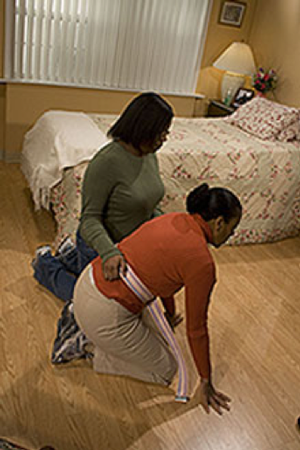
After a few minutes, if a person has no pain and is able to move their arms and legs: Have them crawl to a nearby couch or chair.
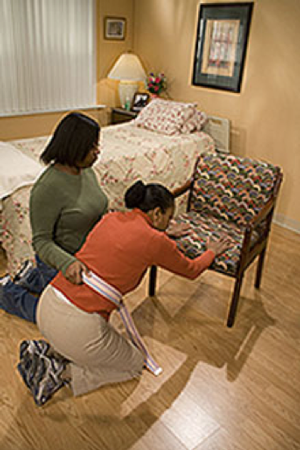
As the person faces the chair, help him or her to get up onto both knees into a tall kneeling position with their arms on the chair.
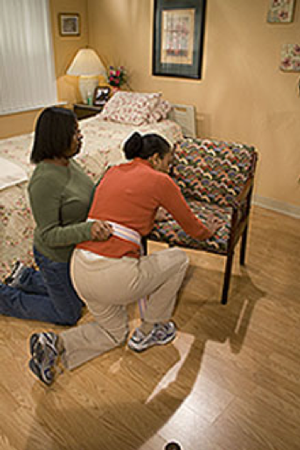
Have the person bring their stronger leg forward into a half-kneeling position.

Then with the person using their arms to help lift their body— assist them to a standing position or a partial stand,
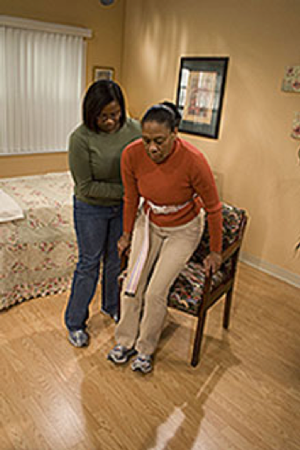
and pivot them into a sitting position into the chair or couch.
After a few minutes, if a person is ready to get up from the chair, ask if he or she still hurts anywhere. If they have trouble walking or moving their arm, hand or foot, take the person to the emergency room.
If the person gets up after a few minutes and says he or she feels fine, keep an eye on them. Watch to see if they walk or move about differently, become sleepy, or take a nap and become difficult to wake up. If you cannot wake them up, Call 911.
Here are some ways to help reduce a person’s risk of falling:
Prevention is a pound of cure. Most falls happen in the home during everyday activities. Take steps to make the home of the person you care for safer. Check each room of the home where the person lives. Have the person help to decide on ways to reduce hazards. See our lesson on Fall Prevention for ways you can make each room of a home and the outside of the home safer.
Walking Safely
Helping a person sit on the side of a bed
Transferring a person, who CAN stand
Transferring a person, who CANNOT stand
Body Mechanics
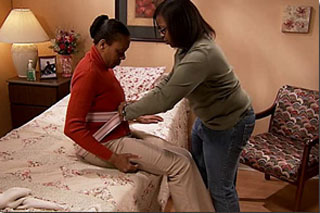
Transferring from bed to chair: A person who CAN stand
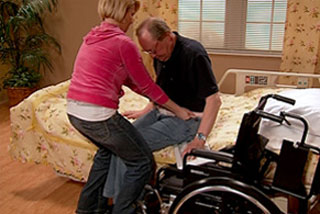
Transferring from bed to chair: A person who CANNOT stand

Assisting with Walking